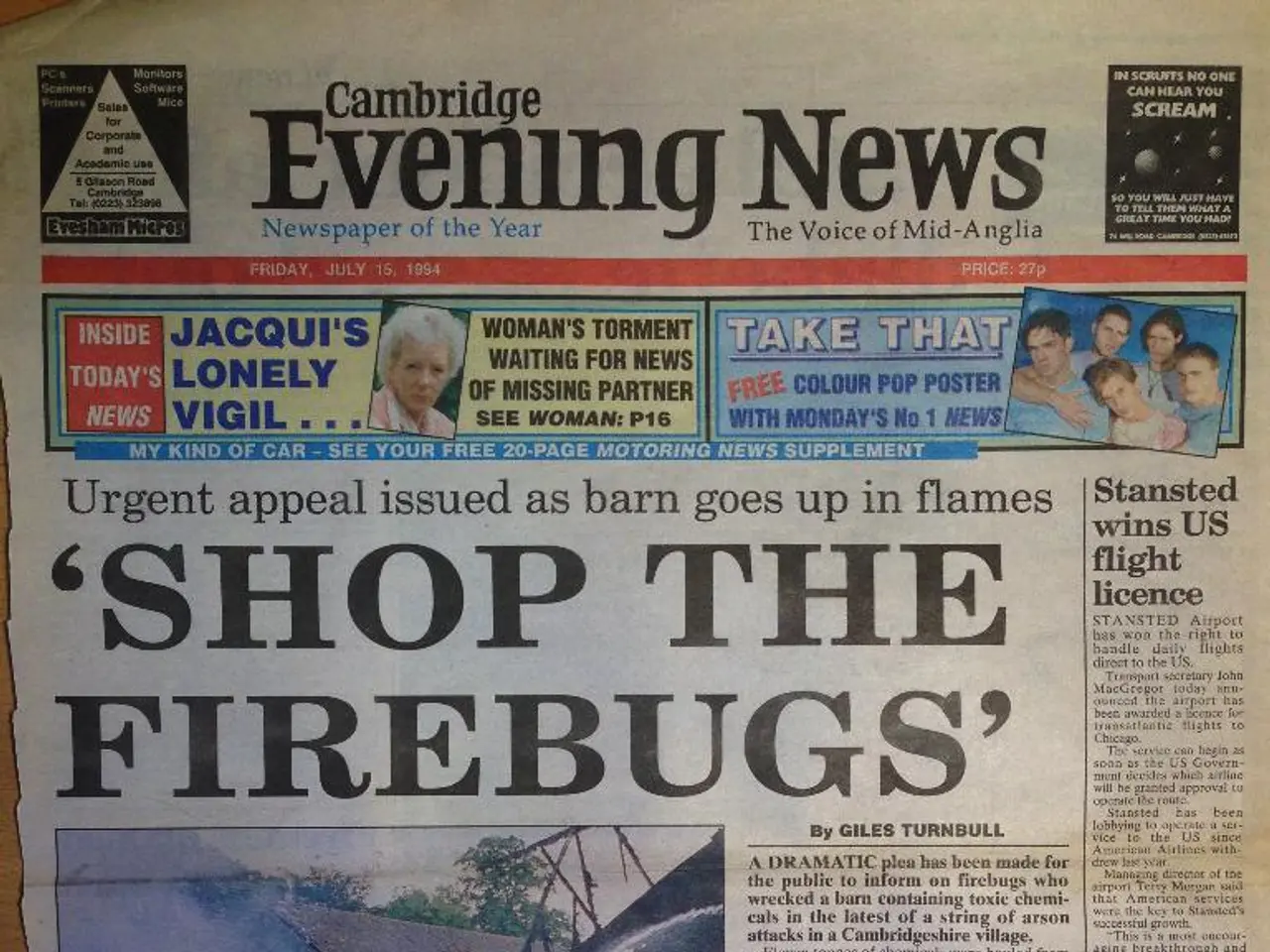Women in Victorian times rebel against restrictive and harmful clothing conventions, leading to the abandonment of damaging fashion traditions.
=====================================================
In the heart of the Victorian era, fashion took centre stage, with corsets and crinolines becoming symbols of social status. However, these garments, while stylish, were harmful to women's health.
Women were laced into corsets with a circumference as small as 18 inches to achieve the desired silhouette. This tight lacing put pressure on women's bust, hips, and stomach, causing issues such as restricted breathing, organ compression and displacement, poor blood flow, and even conditions like prolapsed uterus. The tight lacing of corsets also squeezed the chest, limiting lung capacity and causing fainting spells in some cases.
Crinolines and heavy layered skirts added to the discomfort and impracticality, restricting movement and sometimes leading to accidents due to their bulk. Cage crinolines, with their distinctive bell-shape, were hazardous due to their weight and the risk of catching fire.
Medical professionals of the time recognized these risks, warning against tightlacing as it compromised respiratory function and internal organs. The British National Health Society and other reform movements criticized such fashion for its negative health impact, leading to campaigns advocating more practical and less harmful clothing like the "divided skirt."
Despite these warnings, societal norms of modesty and beauty standards strongly encouraged women to wear these restrictive garments. Florence Wallace Pomeroy, also known as Viscountess Harberton, founded the Rational Dress Society in 1881 to advocate for practicality and safety in women's clothing. The Society's efforts were evident in the 1883 exhibition in London, where practical garments were showcased, including a costume for climbing, riding pants with elastic back pleats, a divided skirt, and a lightweight walking costume.
In 1884, the Rational Dress Society published a pamphlet called 'Reasons for Reform in Dress,' campaigning against tightly-laced corsets, high-heeled shoes, and voluminous skirts. The Industrial Revolution in the 19th century significantly impacted the clothing industry, leading to advancements that expanded women's wardrobes. However, these advancements also brought about new challenges, such as the use of arsenic-laden dyes in corsets, posing significant health problems.
Matilda Nightingale, a public historian with twelve years of curatorial experience, focusing on Victorian culture, fashion, and social history, sheds light on this period. "The Rational Dress Society was a significant force in advocating for change in women's fashion, paving the way for further fashion revolutions in the Edwardian era and the First World War," she says.
The dress reform movement of the 1850s through to the 1890s was a significant fight for women's rights. Amelia Bloomer, editor of the Lily, the first dedicated women's rights newspaper, popularized the 'bloomers' in the 1850s. Despite facing criticism, including being compared to prostitutes in a poem published in Harper's New Monthly Magazine in 1858, the movement persisted, leading to a more comfortable and practical future for women.
References:
- The Rational Dress Society: A Victorian Fashion Revolution
- The Dangerous Lure of the Victorian Corset
- The Victorian Corset: A History of Pain and Pleasure
- The Health Hazards of Corsetry
- The Rational Dress Society, founded by Florence Wallace Pomeroy in 1881, highlighted the intersection of social history and women's health by campaigning against restrictive garments like corsets and promoting practical and less harmful clothing.
- Matilda Nightingale, a public historian, recognizes the impact of the dress reform movement on cultural history, emphasizing the influence of the Rational Dress Society in shaping women's fashion and health-and-wellness during the Victorian era.
- The Victorian fashion trends, characterized by tightlaced corsets and heavy crinolines, showcased cultural history while being not only impractical but also potentially harmful to women's lifestyle, fashion-and-beauty, and overall health.




